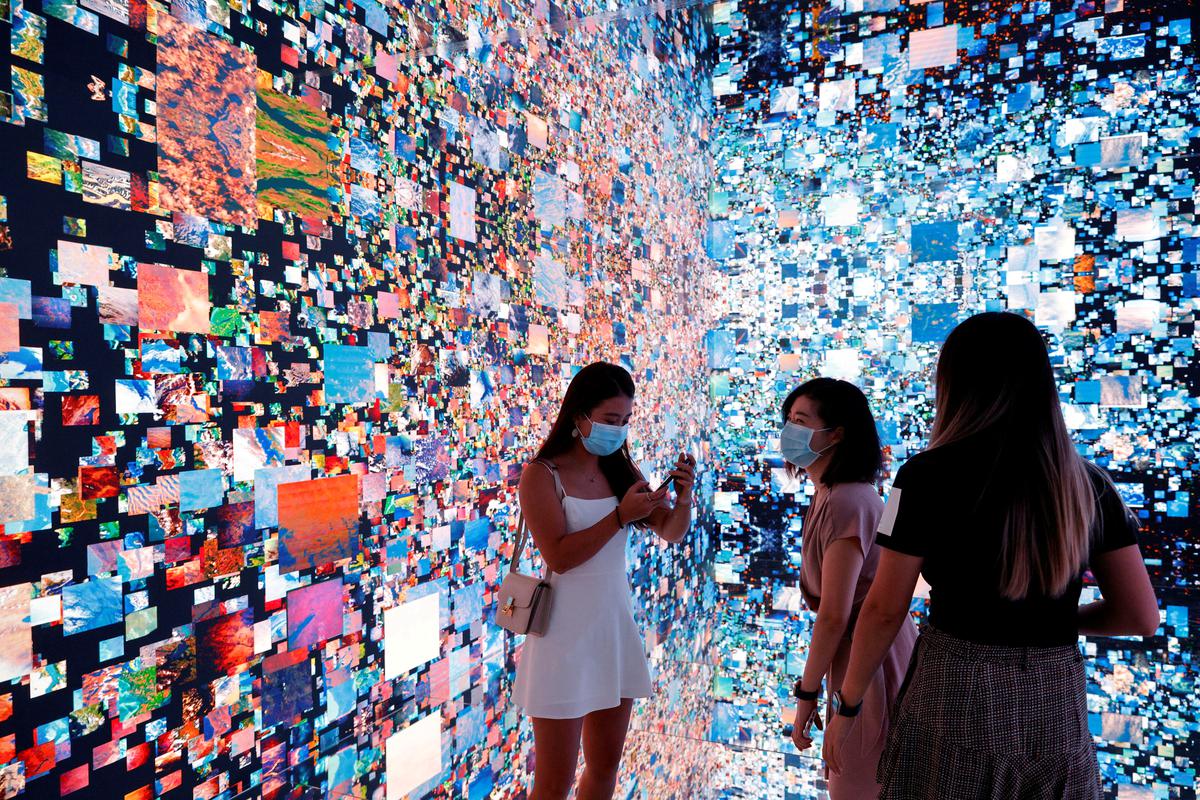
The hype around non-fungible tokens (NFTs) has significantly diminished in recent times, with a report from crypto gambling platform dappGambl suggesting that most NFT collections are now worth close to zero. This is a stark contrast to two years ago when NFTs were seen as a revolutionary investment and had the backing of celebrities worldwide.
NFTs are unique tokens that are recorded on the blockchain, making it possible to prove ownership. They can represent various digital assets such as artwork, music, and digital icons. One popular NFT collection, the Bored Ape Yacht Club, consists of 10,000 NFTs featuring cartoon-style monkeys with different accessories. These NFTs were bought by celebrities like Justin Bieber and Madonna.
So who creates NFTs, and why do people buy them? Anyone with some money and technical knowledge can create an NFT on blockchains like Ethereum or Solana. People buy NFTs with the hope that their value will increase over time, allowing them to sell them for a profit. Others buy NFTs for personal enjoyment and to participate in the NFT community. For example, actor Amitabh Bachchan’s NFT collection, which included his voice recordings and vintage posters, was auctioned for over ₹7 crore in late 2021.
NFTs have also gained popularity in online games like Axie Infinity, where players can collect and trade digital assets to make real-life gains. These play-to-earn games have been particularly popular in countries like the Philippines, where players have relied on them to earn money during lockdowns. However, the economics of these games have faced criticism.
Despite the initial hype, NFTs have faced several criticisms. Financial regulators have warned that NFTs are unregulated assets in a highly volatile market, leaving investors unprotected. Artists have also complained that many NFTs being sold on marketplaces like OpenSea are pirated versions of their work, minted and sold without their permission. NFTs have also faced criticism for their environmental impact, as the energy required to mint them and perform transactions can be significant.
The dappGambl report suggests that most NFTs are currently worth close to nothing. Out of 73,257 NFT collections analyzed by the platform, 69,795 had a market cap close to zero. Even popular NFT collections that gained mainstream attention, like the Bored Ape #3001 bought by Justin Bieber, have experienced significant drops in value.
The crash of NFTs has also affected the metaverse, both in the crypto world and Meta’s virtual reality metaverse. The value of cryptocurrencies and tokens associated with these metaverses has plummeted. For example, The Sandbox metaverse’s SAND token has lost almost 65% of its value in the past year. Meta, the social media platform, has also decided to wind down its NFT offerings.
It’s difficult to predict whether the NFT market will recover in the future. The volatile nature of the crypto economy makes it challenging to determine the future of NFTs. The recent regulatory scrutiny and the collapse of the FTX exchange have further complicated the situation. While rising Bitcoin and Ether prices may give NFTs a boost, their current prices are still far below their record highs in 2021.
In conclusion, the NFT market has experienced a significant decline in value, with most NFT collections now worth close to nothing. The initial hype around NFTs has faded, and they have faced criticisms from financial regulators, artists, and environmentalists. The future of the NFT market remains uncertain, and it’s unclear whether it will recover from its current crash.






